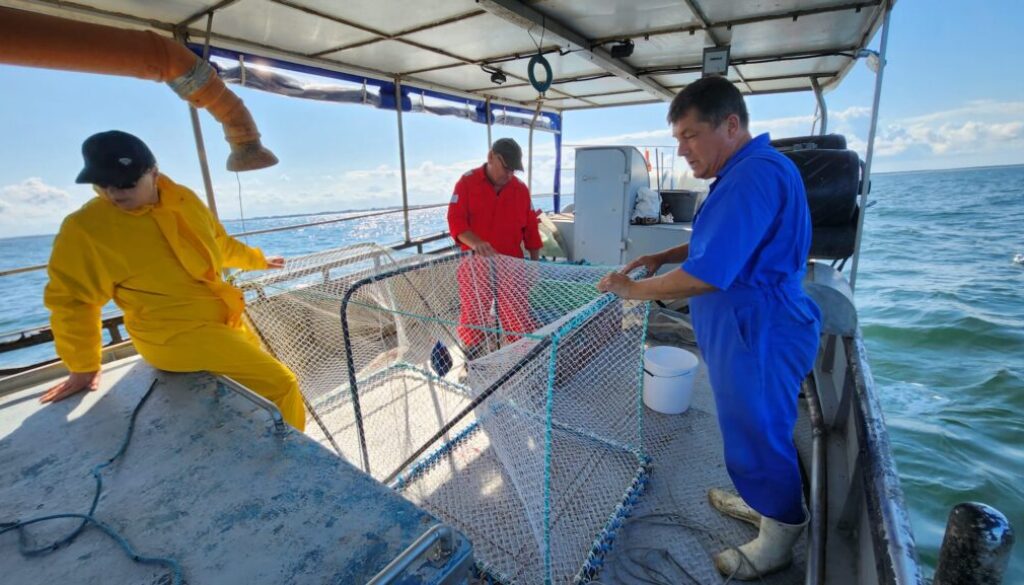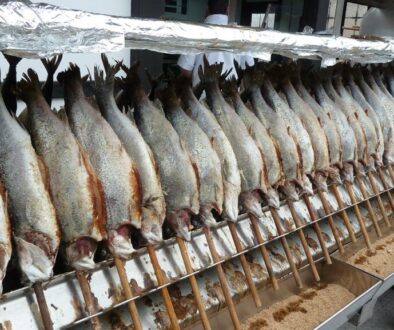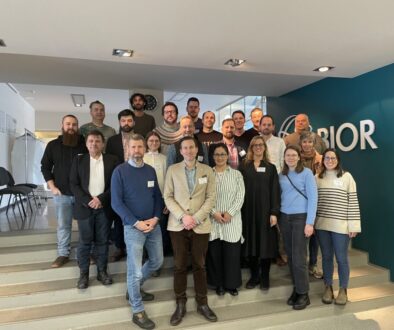The preliminary findings from the research project “Development and use of trap fishing gear adapted to conditions in the Polish coastal zone of the Baltic Sea” are now available. The main objective of the research was to reduce the impact of fishing on the marine environment, including avoiding and reducing, as far as possible, unwanted catches. The project did so by conducting a first of a kind research around the usage of alternative fishing gear: Baltic Fish Pots.
The research was carried out by a consortium consisting of a producers’ organisation – Darłowska Group of Fish Producers and Shipowners and a scientific partner – West Pomeranian University of Technology in Szczecin. The study was carried out on both the species and length composition of fish present in the catch and the effectiveness of protecting the catch from seal interference. The study was conducted by a scientific team together with small-scale fishermen in the Polish Baltic coastal zone. The research fishing was carried out by 21 boats from the fishing port in Darłowo. The fishermen carried out research cruises between July and the end of November 2023. Fishing under the project was carried out on the basis of a research fishing permit issued by the Polish Ministry of Agriculture and Rural Development. As part of the implementation of the operation, 30 cruises were carried out with each of the fishing vessels. The research cruise consisted of fishing with passive gill nets or hooks and the tested Baltic Fish Pots. In the catching, the fisherman placed bait in the cage and set it out for at least 16 h. In addition, one set of commercial gill nets or up to 1,000 hooks were set. While fishing, the fisherman, recorded the catch data and duly filled in the Baltic Fish Pots survey catch sheet (including the fishermen’s mark, number and location of fish pots set, characteristics of the comparison gear – gear type, set length, mesh clearance, fishing time, depth of the fishery, type of bottom, meteorological conditions – sea state, wind strength and direction, water temperature, number of fish, species of fish caught and their weight within species). In addition, observations and underwater documentation of the fish pots on display were carried out. Each time a cruise was made, the fisherman handed over a completed Baltic Fish Pots survey catch sheet in port and the fish caught from the fishing gear (gill nets or hooks and Baltic Fish Pots). All fish caught by fish pots and additionally cod caught by gill nets or hooks were measured (LT) and weighed (W).
The research carried out allowed the following conclusions to be drawn:
- Three fish species dominated the cage fishery: cod (Gadus morhua), European flounder (Platichthys flesus) and devil hen (Myoxocephalus scorpius).
- Fish in the fish pots were alive and in good condition.
- Single catches of other fish species i.e. mackerel (Scomber scombrus), parr (Alosa fallax) and perch (Perca fluviatilis) were observed.
- Occasionally the simultaneous presence of two fish species in fish pots was observed; cod and flounder; cod and devil hen.
- Periodically a significant presence of jellyfish (Aurelia aurita) was observed in the fish pots, at which time no fish was detected.
- Grey seals (Halichoerus grypus) were observed to be present and showed great interest in the research fishery being conducted. Damage to gill nets and entrapped fish was observed during fishing. No damage to the fish pots by grey seals was observed during fishing, but two cases of seals becoming entangled in the gill nets were found. It can be concluded that the fish pots meet the original intentions and are seal resistant and seal friendly.
- As a result of the study, the necessity to conduct further research, in other areas of the Polish Baltic coastal zone and over a longer period of time, taking into account the planned modifications of the Baltic Fish Pots cage design, was identified.
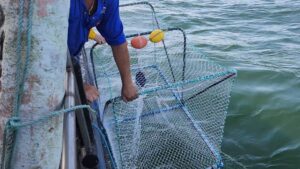
Setting Baltic Fish Pots out in the Baltic Sea.
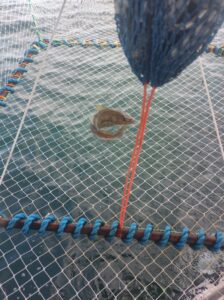
Cod in the Baltic Fish Pot.

